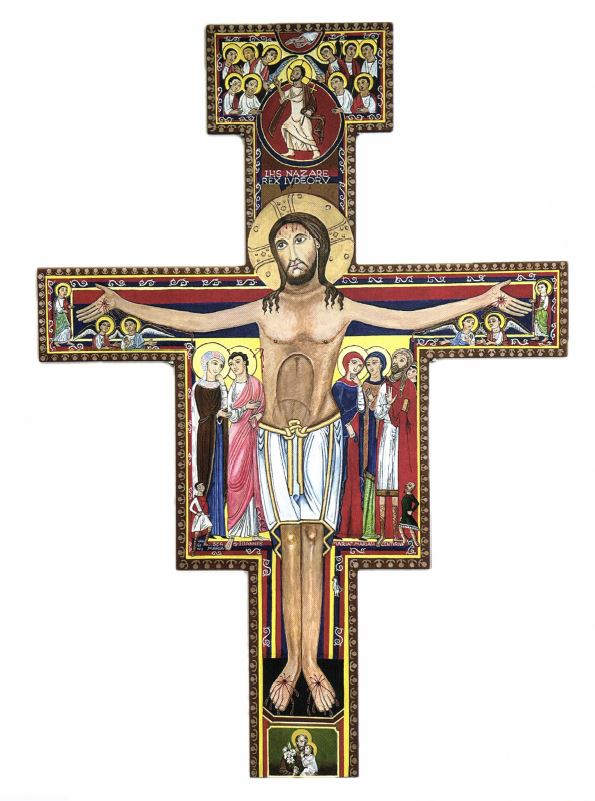San Damiano CrossLocated on the wall above the Wedding Feast of the Lamb painting is a San Damiano Cross painted for us by parishioner Jose Isla. The original San Damiano Cross dates from around the year 1100. The purpose of an illustrated cross like this was to teach the meaning of each depicted event and strengthen the faith of the people who could not read or write.
Jesus is surrounded by five witnesses of the crucifixion. On the left side are the Virgin Mary and St. John the Evangelist. On the right side are Mary Magdalene, Mary, Mother of James, and the centurion who in Matthew’s Gospel asks Christ to heal his servant, who is depicted on the shoulder of the centurion. Two smaller figures are in the corners with the witnesses. On the lower left is the Roman soldier who pierced the side of Jesus with a lance. On the lower right is the soldier who offered Jesus the sponge soaked in vinegar wine. Six angels are positioned at both ends of the crossbar. Their hand gestures indicate they are discussing this wondrous event of Jesus’s death on the cross for us and calling us to marvel with them. At the foot of our cross is St Joseph holding Jesus as a child. At the top of the cross Jesus is shown in regal garments carrying the cross as a triumphant scepter. He is climbing out of the tomb and into the heavenly courts. Ten angels are crowded around, with their hands extended in a welcoming gesture to Jesus, who himself has his hand raised in the form of a greeting, At the very top of the cross is the Hand of God with two fingers extended as the blessing of God the Father on the sacrifice of his Son. And on the right side of the cross next to the left leg of Jesus is a small figure of a bird, which can be a rooster, representing the sign of Jesus’ denial by Peter. It can also be interpreted as a peacock, a symbol of immortality in Early Christian art. |
|
|

